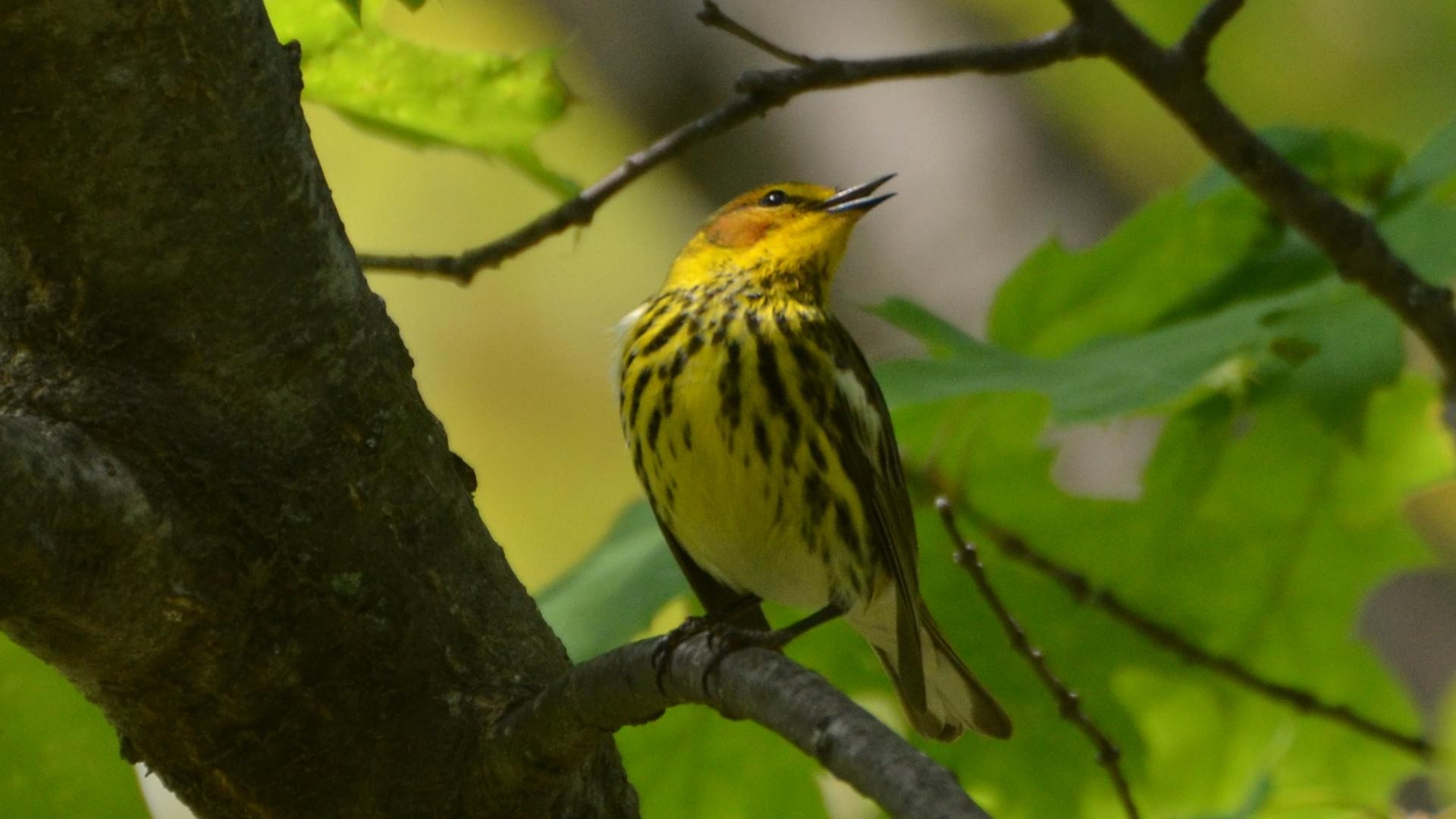Cape May Warbler
A species of Setophaga Warblers Scientific name : Setophaga tigrina Genus : Setophaga Warblers
Cape May Warbler, A species of Setophaga Warblers
Botanical name: Setophaga tigrina
Genus: Setophaga Warblers
Content
Description People often ask General Info
 Photo By Andy Reago & Chrissy McClarren , used under CC-BY-2.0 /Cropped and compressed from original
Photo By Andy Reago & Chrissy McClarren , used under CC-BY-2.0 /Cropped and compressed from original Description
This bird is a small passerine and is a mid-sized New World warbler. Length can vary from 12 to 14 cm (4.7 to 5.5 in), wingspan is 19–22 cm (7.5–8.7 in), and body mass can range from 9 to 17.3 g (0.32 to 0.61 oz). Among standard measurements, the wing chord is 6.1 to 7.3 cm (2.4 to 2.9 in), the tail is 4.3 to 5 cm (1.7 to 2.0 in), the bill is 0.9 to 1.2 cm (0.35 to 0.47 in) and the tarsus is 1.7 to 1.9 cm (0.67 to 0.75 in). The summer male Cape May warbler has a brown back, yellowish rump and dark brown crown. The underparts are yellow, streaked black, giving rise to the bird's scientific name. The throat and nape are bright yellow and the face is striking chestnut with a black eyestripe. There is a narrow white wing bar. Other plumages resemble washed-out versions of the alternate-plumaged male's, lacking the strong head pattern. The yellowish rump and at least indications of the white wing bar are always present. 
Size
12 cm (4.75 in)
Colors
Brown
Yellow
Bronze
Gray
Life Expectancy
4 years
Nest Placement
Tree
Clutch Size
4 - 9 eggs
Incubation Period
1 brood
Feeding Habits
Cape May Warbler primarily consume insects like spruce budworm, pivotal to their populations, and various other invertebrates. They forage in treetops, capturing prey by probing, picking, hover-gleaning, and chasing. They also feed on nectar, fruit, and sap, with nectar and fruit constituting a third of their diet in nonbreeding seasons. Their habitats range from boreal forests to tropical areas and backyards.
Habitat
Cape May Warbler typically inhabit boreal forests, favoring mature spruce and balsam fir woodlands, particularly where spruce budworms thrive. These warblers prefer nesting in forests aged roughly 25-75 years with trees over 35 feet tall. During migration, cape May Warbler can be found in diverse wooded areas, including scrublands and thickets, often near the edges. In their winter habitat across the Bahamas and Greater Antilles, they adapt to varied environments such as shrubby gardens, coffee plantations, parks, dry forests, mangroves, and second-growth habitats.
Nest Behavior
Cape May Warbler build nests high in trees during breeding season and lay eggs that are tended by both parents. They show precise egg-laying patterns and invest significant care in their young, with both sexes involved in parental duties.
Nest Characteristics
Cape May Warbler nest in spruce and occasionally balsam fir trees, typically 40-50 feet up near the trunk. Their nest is a bulky, oval-shaped cup of twigs, grass, pine needles, and bark, with interior lining of hair, rootlets, and feathers, sometimes with exterior sphagnum moss. It measures about 4.1 inches wide and 2.4 inches high.
Dite type
Insectivorous
People often ask
General Info
Feeding Habits
Bird food type
Bird Feeder Type

Platform
Behavior
Cape May Warbler exhibit distinct behaviors throughout their lifecycle, particularly during breeding times. Males display territoriality, maintaining an acre-sized breeding ground and will actively chase away competitors. They oversee the nest construction by females but do not physically assist. After egg-laying, both parents cater to the offspring's needs. Post-nesting, the family remains local before migrating, often joining other bird groups. In winter habitats, territorial behavior varies, and during migration, males may defensively showcase characteristic raised tails and drooped wings to protect resources.
Species Status
Not globally threatened.

 Photo By Andy Reago & Chrissy McClarren , used under CC-BY-2.0 /Cropped and compressed from original
Photo By Andy Reago & Chrissy McClarren , used under CC-BY-2.0 /Cropped and compressed from original Scientific Classification
Phylum
Chordates Class
Birds Order
Perching birds Family
New world warblers Genus
Setophaga Warblers Species
Cape May Warbler